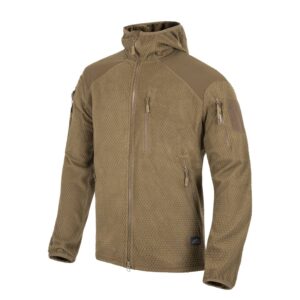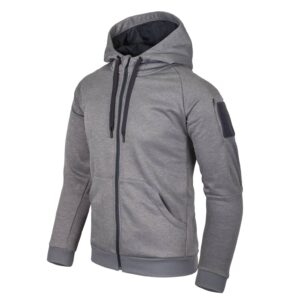Military fleece
Military fleece
Wide choice of military insulating fleece, and Polaterc layers, specially designed to meet every need, our insulating layers come from Helikon-Tex and Tilak, all products are tested in the field by the armed forces, and are designed to respond to the more demanding needs, to face even the most impervious climatic conditions
We all know the Pile, it is comfortable, warm and easy to care for. But where does it come from and how does it work?
At the end of the 1970s Malden Mills began producing a polyester fabric with thermal insulation properties similar to wool, but cheaper, lighter and easier to care for.
The prince of fleeces is Polartec (Malden Mills’ new name) also known as PolarFleece. Thousands of textile manufacturers produce fleece, very few of the quality and durability of the original Polartec.
The military world notes the usefulness and cheapness of the product and military batteries begin to appear, in different shapes and weights, depending on the use.
Army fleeces need to be warm, lightweight and equipped with functional pockets. Weights range from 100 g per square meter to over 300 g, to offer breathable insulation that can also be superimposed, for example: a 100 g “microfleece” over functional underwear and over a heavy 300 g layer, the solution for harsh climates .
So fleece is perfect ?! Not really, but used in the right way it works perfectly, its limits are that it is not fire retardant (there are FR fire retardant versions for specific uses) and it is not windproof and waterproof, so it must be covered with a windproof and waterproof layer.
In recent years, mountaineering fleece technology has contaminated the military sector and gave birth to the tactical fleece, where military colors and functionalities are combined with technical mountaineering performance. Hence the evolutions of the classic fleece, the Polartec Power Stretch (polyamide and elastane surface with a tighter fit and more resistant to abrasion), the Polartec HiLoft (“furry” traps the air like animal fur, but weighs less and has less volume than the classic 300 g).
Some of the best value for money products are produced by Helikontex of Poland.
We then chose the Czech Tilak MiG for the very high quality and performance of its garments for the Special Forces and for the fact that they produce in the Czech Republic.
-
Military fleece
Thermal tactical shirt in Polartec® Power Stretch® Tilak Serak Mig
103,70€ Select options








